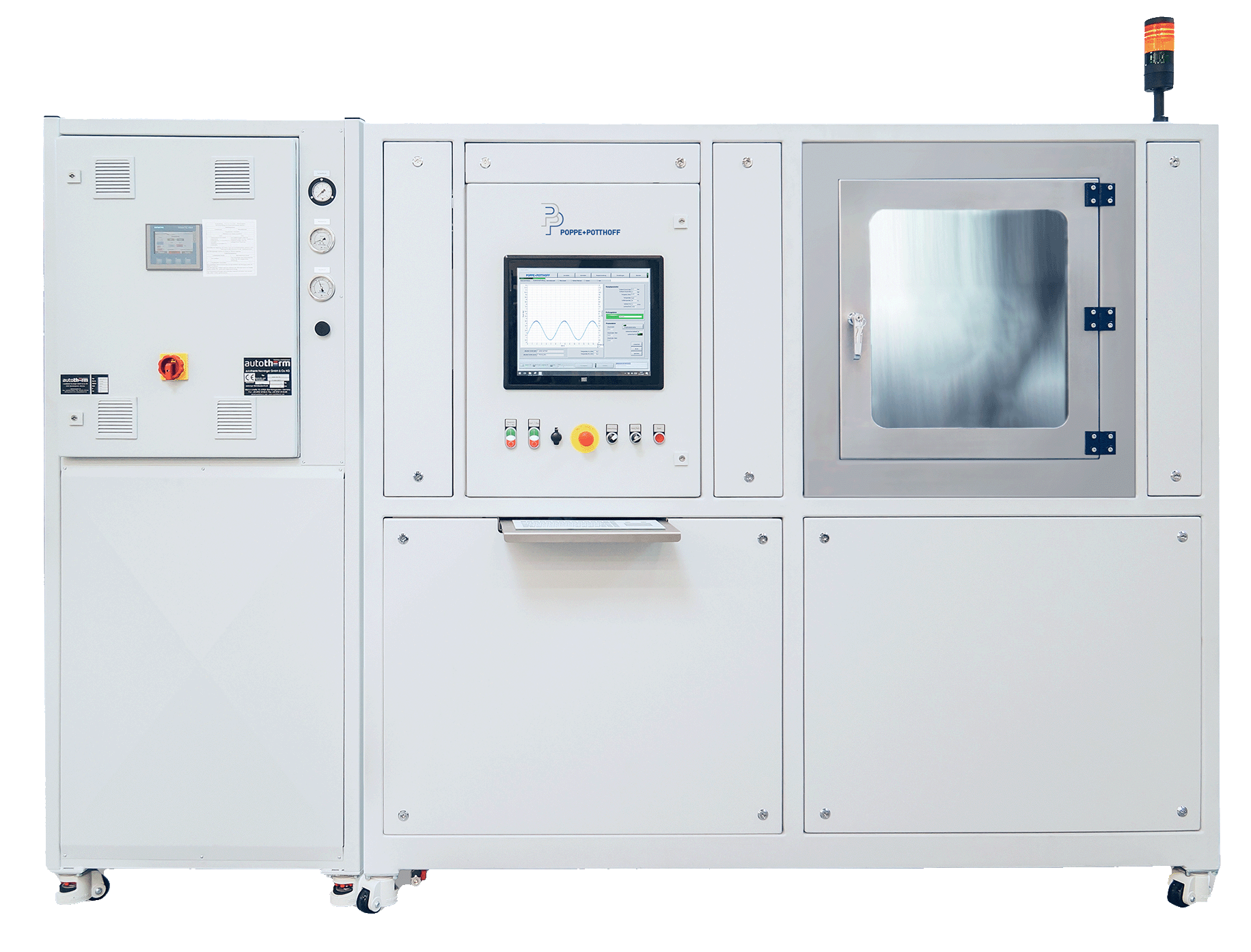Testing the operational lifespan of heat pump components through pressure cycling tests.
Poppe + Potthoff Maschinenbau GmbH specializes in the development of high-precision test stands to test the reliability and durability of heat pump components, thus ensuring manufacturers gain important insights into the performance of their components. In this case study, we briefly illuminate how pressure cycling tests are used to test the operational lifespan of heat pump components on a test stand.
Heat Pumps – An Overview
A heat pump is a device that transfers thermal energy from a source to a so-called “sink,” where the heat is elevated to a higher temperature level. Its operating principle is based on the thermodynamic cycle process, which includes four main components: evaporator, compressor, condenser, and expansion valve.

- Evaporator: Here, a liquid (refrigerant) is cooled until it evaporates. This process extracts energy (heat) from the heat source.
- Compressor: The gaseous refrigerant is then led into the compressor. Compression increases the pressure of the refrigerant, which leads to an increase in temperature. The increase in pressure is crucial as it allows the system to transport heat to a higher temperature level.
- Condenser: In the condenser, the hot, compressed refrigerant releases its heat to the surroundings and condenses back into a liquid state.
- Expansion Valve: The expansion valve reduces the pressure of the refrigerant, leading to cooling. The refrigerant returns to the evaporator, and the cycle begins anew.
The efficiency and longevity of a heat pump depend heavily on the ability of its components to withstand various pressure levels. Pressure cycling tests are therefore critical to ensure the reliability of these components, especially in terms of the pressure differences created by the compressor and transferred throughout the system.
Problem description
Heat pumps are crucial for energy-efficient heating systems. However, their components, such as expansion valves, are exposed to varying pressures, which can affect their lifespan. Therefore, precise testing of these components in both development and production is essential.
Solution
Poppe + Potthoff implemented a pressure cycling test that includes:
- Pressure cycling tests with a vacuum from -0.3 to 10 bar: To test the components under realistic conditions.
- Programming of sine and trapezoidal curves: These curves simulate different operating states to test the components under various stresses.
- Use of water-glycol as the test medium: This allows the components to be tested under realistic thermal conditions.
- Media tempering: To investigate the effects of different operating temperatures on the components.
Specification Sheet of the Pressure Cycling Test Stand
Results
Through the pressure cycling tests, the manufacturer obtains important data and insights into the performance of its components. These are also important for the certification of the components. The strength and durability testing in component development can further optimize the component. The tests help to minimize the risk of operational failures and increase the overall reliability of heat pump systems.
Conclusion
The advanced testing methods of Poppe + Potthoff represent a significant advancement in the quality assurance of heat pump components. These technologies not only ensure a longer lifespan for the components but also contribute to the efficiency and sustainability of heating systems.


